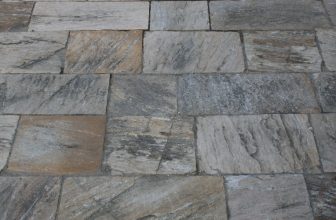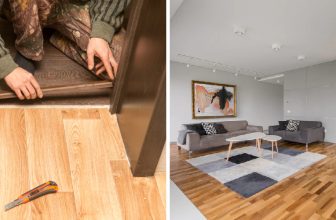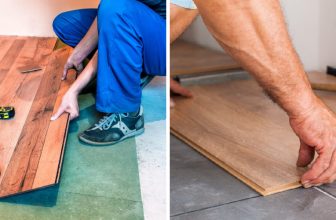How to Remove Rug Pad Residue From Hardwood Floors
Do you have an old rug pad that left a sticky residue on your hardwood floors? If so, don’t fret – it can be removed easily without damaging your floor.

This blog post on how to remove rug pad residue from hardwood floors will explain how to remove the residue quickly and safely, using only natural ingredients found around the house. We’ll also include some tips for avoiding this issue in the future. The results are sure to leave your floors looking like new once again!
Needed Materials
Given below are the necessary materials to remove rug pad residue from hardwood floors:
- White Vinegar
- Warm Water
- Dish Soap
- Microfiber Cloths or Soft Towels
- Baking Soda (Optional)
- Scraper Tool (Plastic or Rubber)
- Bucket
12 Step-by-step Guidelines on How to Remove Rug Pad Residue From Hardwood Floors
Step 1: Prepare a Solution
Start by creating a cleaning solution using equal parts of white vinegar and warm water. You can also add a few drops of dish soap for extra cleaning power. It is important to use white vinegar as it is a natural cleaner and will not harm your hardwood floors. You can also add a tablespoon of baking soda for an extra boost, but this step is optional. If you have a large area to clean, make sure to increase the measurements accordingly.
Step 2: Heat the Solution
Warm up the solution by microwaving it for a few seconds or heating it up on the stove. This will help loosen up the residue and make it easier to remove. You don’t want the solution to be too hot, just warm enough to make a difference.
But be careful not to boil the solution. This step is optional but highly recommended. It will make the cleaning process more effective. You can also skip this step if you are using warm water to create the solution. Though it might take a little longer for the solution to work, it will still give good results.
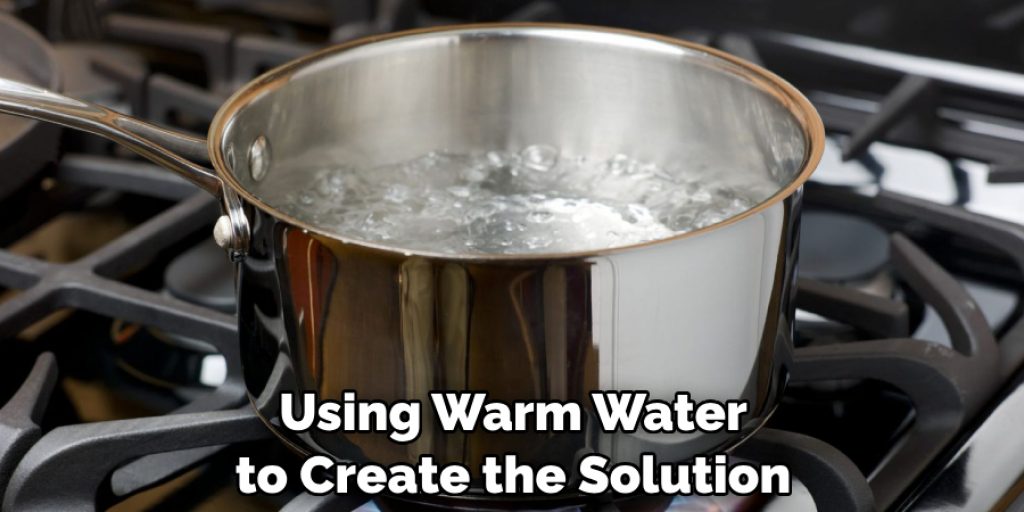
Step 3: Protect Your Hands
Make sure to wear gloves before moving on to the next steps, as vinegar can be harsh on your skin. It’s always better to be safe than sorry! This step is optional but recommended. You can also wear an old T-shirt or cloth to protect your hands. If you have sensitive skin, make sure to use gloves. But if not, you can skip this step. You can also skip this step if you are using only warm water to create the solution. It will not harm your skin.
Step 4: Pour Solution onto Residue
Slowly pour the warm solution onto the affected area, making sure to cover all of the residue. Let it sit for a few minutes while it works its magic. This step might take some patience, but it will ensure that the residue is loosened and easier to remove. You can also add extra solutions if needed. Make sure to cover the entire residue and let it sit for at least 5 minutes, longer if the residue is tough and hard to remove.
Step 5: Scrub Gently
Using a soft cloth or microfiber towel, gently scrub the residue in a circular motion. Be careful not to use too much force as it may damage your hardwood floors. It’s important to be patient and gentle while scrubbing. You can also use a sponge or soft-bristled brush for this step. Avoid using abrasive materials like steel wool as it may scratch your floors. This step might take some time, but it will ensure that the residue is completely removed.
Step 6: Use the Scraper Tool
If the residue is stubborn and does not come off with gentle scrubbing, you can use a plastic or rubber scraper tool to carefully scrape it off. Make sure to be gentle and only use this method as a last resort. You don’t want to damage your hardwood floors in the process.
This step is optional but may be necessary depending on how tough the residue is. You can also use a credit card or old gift card or use scraper tool if needed. It should be thin and flexible enough to not cause any damage.
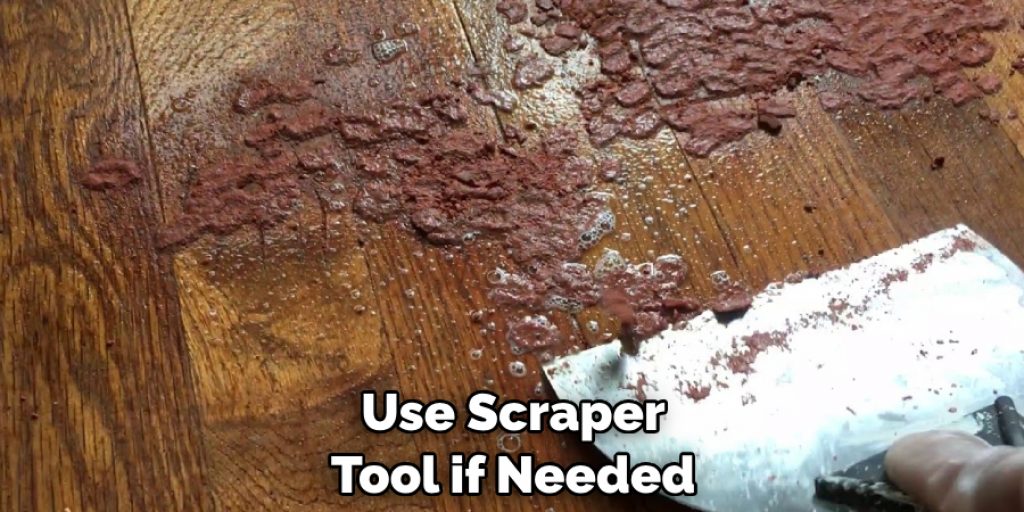
Step 7: Wipe Away Residue
Once the residue is removed, use a clean cloth or towel to wipe away any remaining solution or residue. You may need to rinse and wring out the cloth multiple times to ensure it is completely clean. This step is important to prevent any leftover residue from causing damage or buildup on your floors.
You can also use a separate cloth to dry the area if needed. It’s important to make sure the area is completely dry before moving on to the next step. But don’t worry, the vinegar smell will dissipate once it dries.
Step 8: Rinse with Warm Water
To make sure all of the residue and solution are removed, rinse the area with warm water. Then, use a clean cloth to dry the spot. This step will ensure that no leftover residue or solution is left behind. You can also use a separate bucket of warm water and a clean cloth to rinse the area if needed.
It’s important to be thorough in this step as any leftover residue may cause buildup over time. You can also skip this step if you feel that the area is already clean and residue-free.
Step 9: Check for Any Remaining Residue
After drying, check if there are any remaining traces of residue. If you notice any, repeat the process until it is completely gone. It’s important to make sure the area is completely clean before moving on to the next step. You can also use a flashlight or bright light to see any leftover residue that may not be visible in regular lighting. This step will ensure that your floors are completely residue-free.
Step 10: Let Dry Completely
Make sure to let the area air dry completely before placing any rugs or furniture back on it. This will ensure that the residue does not transfer onto anything else. But don’t worry, once the area is completely dry, it will be safe to use as normal. You can also use a fan or open windows to speed up the drying process if needed.
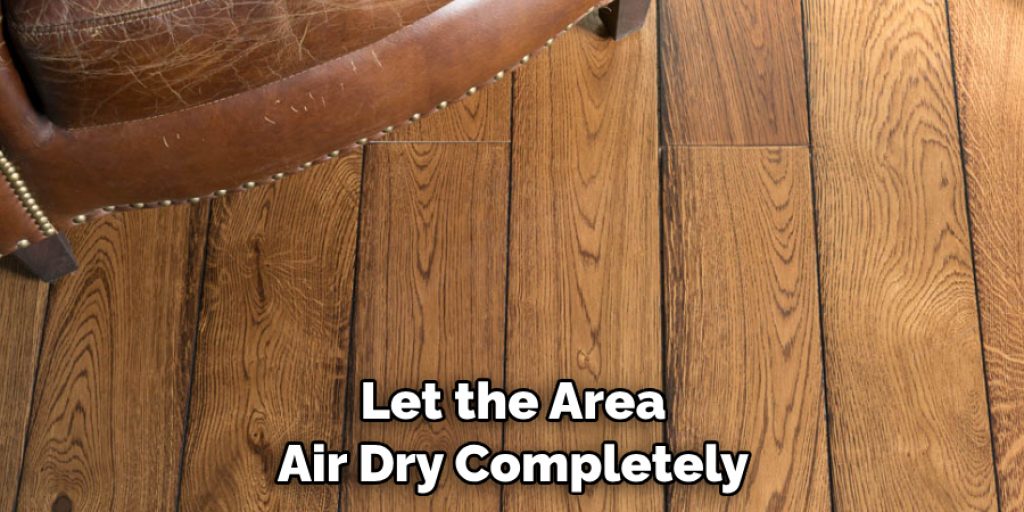
Step 11: Repeat as Needed
If you notice any leftover residue in the future, make sure to repeat this process. It’s important to regularly clean and maintain your hardwood floors It will ensure that they stay in good condition and free of any residue buildup. You can also add this cleaning step to your routine to prevent any future residue from forming.
By following these steps, you can easily remove rug pad residue from hardwood floors and keep them looking clean and shiny. So next time you notice any sticky or tough residue on your floors, don’t panic! Just follow these steps for a quick and effective solution. With a little bit of patience and the right ingredients,
Step 12: Dispose of Materials
Dispose of all used materials properly, including gloves and old clothes or towels. Make sure to clean off your scraper tool as well for future use. It’s important to properly dispose of all materials used in the cleaning process to prevent any potential harm or damage. Remember, safety is always a top priority!
Following these 11 steps on how to remove rug pad residue from hardwood floors will ensure that your hardwood floors are free of any rug pad residue. Now, let’s take a look at some tips for avoiding this issue in the future.
Tips for Avoiding Rug Pad Residue in the Future
- Use a High-quality Rug Pad That is Specifically Made for Hardwood Floors.
- Check the Label on Your Rug Pad to Make Sure It is Safe for Use on Hardwood Floors.
- Avoid Using Adhesive or Double-sided Rug Pads as They Are More Likely to Leave Residue.
- Clean Underneath Your Rugs and Rug Pads Regularly to Prevent Any Buildup of Dirt or Debris.
- If You Notice Any Residue, Make Sure to Clean It Off Immediately Before It Becomes More Difficult to Remove.
- When in Doubt, Test a Small Area With the Cleaning Solution First Before Using It on the Entire Affected Area.
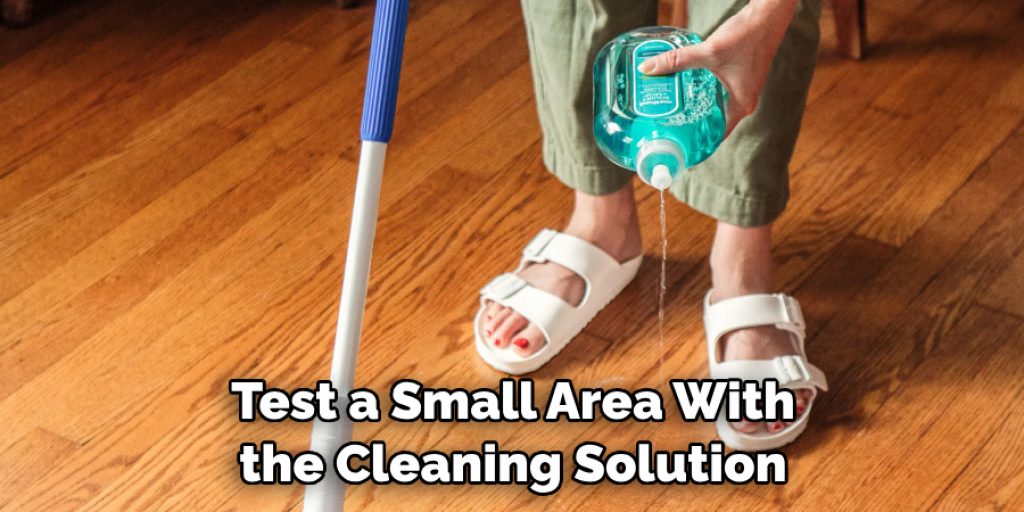
By following these guidelines and tips, you can easily remove rug pad residue from your hardwood floors without causing any damage. Remember to always be cautious and use natural, safe ingredients to protect your floors. Prevention is key, so make sure to regularly clean underneath rugs and switch out rug pads when necessary. Now you can enjoy your beautifully clean hardwood floors without any sticky residue getting in the way!
Frequently Asked Questions
Q1: Can I Use Any Other Type of Vinegar Besides White Vinegar?
A1: White vinegar is the best option for this cleaning solution as it is safe to use on hardwood floors and will not cause any damage. Other types of vinegar may be too acidic and could harm your floors. It is best to stick with white vinegar for this method.
Q2: Do I Need to Use Gloves When Handling the Cleaning Solution?
A2: While it is not necessary, it is recommended to wear gloves when handling the cleaning solution. Vinegar can be harsh on your skin and wearing gloves will protect your hands from any potential irritation.
Q3: Can I Use a Different Type of Scraper Tool if I Don’t Have a Plastic or Rubber One?
A3: It is not recommended to use any other type of scraper tool besides plastic or rubber. Other materials may be too abrasive and could cause damage to your floors. If you do not have a plastic or rubber scraper tool, it is best to skip this step and stick with gentle scrubbing.
Q4: Can I Use This Method on All Types of Hardwood Floors?
A4: Yes, this method can be used on all types of hardwood floors. However, it is important to test a small area first before using the cleaning solution on the entire affected area. Some floors may be more sensitive and could potentially get damaged by the solution. It is always better to err on the side of caution and test first.
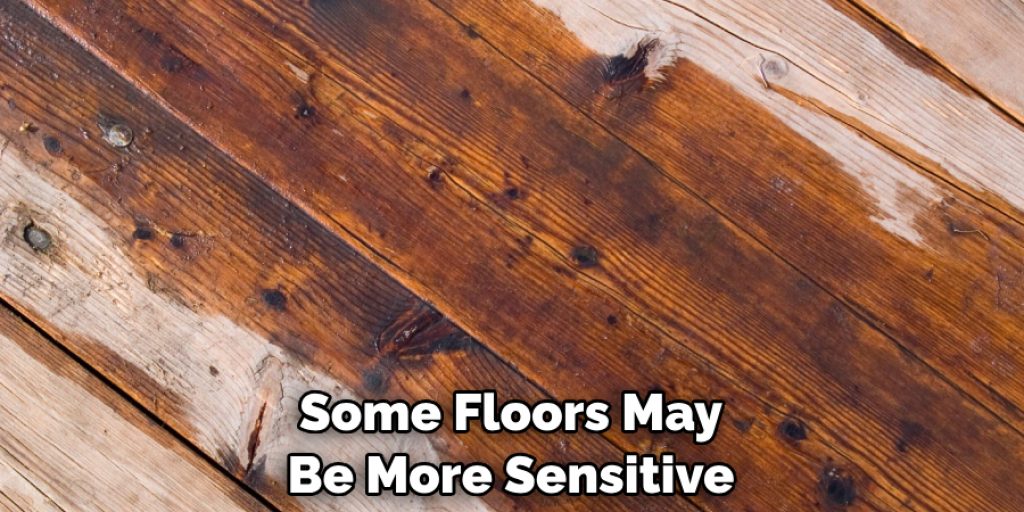
Conclusion
In conclusion, rug pads are a beneficial floor covering for hardwood floors; however, the residual grip from adhesive residue can stay on the floor and be difficult to remove. Fortunately, there are a few easy and effective ways to get rid of the rug pad residue using household items such as white vinegar, rubbing alcohol, or baking soda.
If these solutions do not work for you or if your residue has deeply embedded itself in the wood, contact a professional who will have other methods of removing tough residues like this.
Take care of your hardwood floors now these tips on how to remove rug pad residue from hardwood floors will help maintain their condition and keep them beautiful so that when it comes time for guests they know how much care went into their environment. So don’t wait– start gathering those supplies now and get rid of that pesky rug pad residue!

